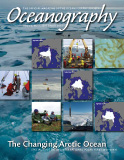Article Abstract
The societal need for—and urgency of obtaining—basic information on the distribution of Arctic marine species and biological communities has dramatically increased in recent decades as facets of the human footprint alter Arctic marine biodiversity. The primary goals of this article are to present updated species inventories based on focused biodiversity research over the last decade, to give examples of emerging recent changes in diversity as indicators of environmental change, and to recommend future diversity-related research areas. Species inventories across all eukaryotic taxonomic levels now total close to 8,000 species, with several thousand additional benthic species predicted to be recorded or discovered in the future. The currently known Arctic species richness estimate includes close to 2,000 phytoplankton taxa, over 1,000 ice-associated protists, greater than 50 ice-associated metazoans, ~ 350 multicellular zooplankton species, over 4,500 benthic protozoans and invertebrates, at least 160 macro-algae, 243 fishes, 64 seabirds, and 16 marine mammals. Endemic and abundant species are present in all three environmental realms (sea ice, water column, and seafloor) and across phyla. The few published time series on Arctic marine biodiversity have detected interannual and interdecadal variability or change both in pelagic and benthic habitats, and at virtually all trophic levels. We identify knowledge gaps and stress the urgency to fill them. We recommend regular, strategic, and sustained monitoring of Arctic marine biodiversity in a public, open-access fashion in order to provide comprehensive data to inform management, conservation, and other decisions.

